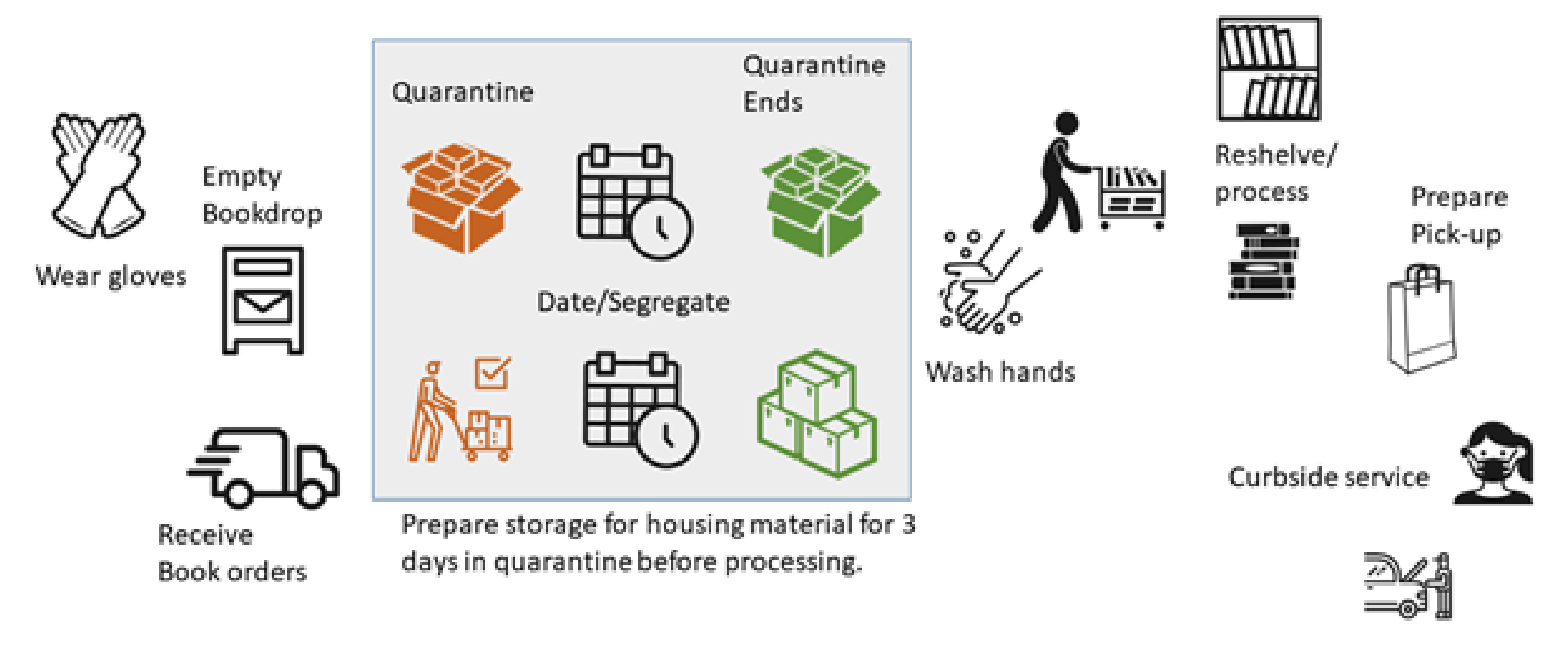Post 2 of 3: Preparing and Implementing Tools to Reopen Post Quarantine: PPE, Training, & Handling Returned Material
May 12th, 2020
The prior blog post described the current state of library services and recommended what to consider as phase 1 of your reopening plan. State-wide stay-at-home orders have recently undergone revision in many US states and local jurisdictions. Written legal opinions have also provided some guidance to library leadership on the authority of and liability to the library to determine when the next set of services can be enabled. Libraries are heading towards the second phase of their reopening plans.
The table below highlights the differences within your library services platform (LSP) to consider within library reopening plans phase 1 and phase 2.
| Phase 1: Library facilities closed to the public with services provided virtually | Phase 2: Library Facilities Open for Limited Staff-Provided Services |
|---|---|
| Library facilities closed, providing virtual services | Library facility provides curbside, home delivery, open limited hours, PPE supplied to staff, virtual services continue |
| Days Closed set for libraries in ILS | Days Closed updated to limited days libraries open in ILS |
| Patrons can place requests but are suspended via automated ILS script | Patrons can place requests but only on local library material; requests denied on other library collections via hold parameters within the ILS |
| Due dates are extended in ILS to a single fixed date based on regional or statewide stay-at-home order | Due dates are extended in ILS to new date based on reopening plan |
| ILL delivery between libraries suspended | Same as phase 1 |
| Patron notifications and billing via email, text, telephone, and print remain suspended | Same as phase 1 |
| Card expirations are extended to a single fixed date | Same as phase 1 |
| OCLC set as non-supplier | Same as phase 1 |
| Patrons with a status of either delinquent or blocked who owe less than $100 have their status changed to OK through a nightly scripted task | Same as phase 1 |
Secure Your Local PPE Supply
The resumption of services within phase 2 of a reopening plan will be heavily dependent on a steady supply of PPE and supplies. If the stockpile of PPE at the library dwindles below a set threshold, your library could move back into phase 1 of your plan as your library will be unable to safely protect library employees and the public.
As a leader of a library resource sharing consortium, I have launched a group-purchase of PPE for libraries just as we would have arranged a group-purchase of online subscription databases. We are seeing libraries pool their purchasing power to acquire stockpiles of personal protective equipment for libraries.
The supplies you should be considering for purchase include:
- Paper bags for delivery and curbside
- Masks
- Face shields
- Workstation guards, aka sneeze guards
- Gloves
- Hand sanitizer
- Portable sinks
Your plan may rely on a designated location for storing library only PPE and supplies that can be purchased as needed and shared among area libraries.
Video #1: Train Your Staff On PPE Usage
Having online training videos for your library staff on how and when to properly wear masks and gloves should be a requirement for everyone returning to work. Online video training will allow library staff to remain at home and prepare in advance before returning to the building.
Video #2: Training On Quarantine of Returned Materials
Figure 1: Designate when to use gloves and masks when handling returned material
Library staff emptying book drops and returned material should have clear guidelines on PPE use and travel paths at set times of the day. Library spaces for gatherings and meetings are repurposed for returned material quarantine spaces within the phase 2 part of the reopening plan. The goal is to separate material in designated spaces and give time for the COVID-19 virus to die off on any material surface. Signage with start and end dates with a specific time for processing are important considerations in designing your quarantine area. These considerations should extend to library shipments of new material and to those staff involved with unpacking and processing received shipments.
When we examine our libraries from the perspective of fulfillment centers, we quickly realize the importance of efficient processing, controls, and safety in the workplace. Preparing the workforce and workspace tops the daily chart of activities. It needs to be top and center in all library operational activities from acquisitions to circulation to technical services.


